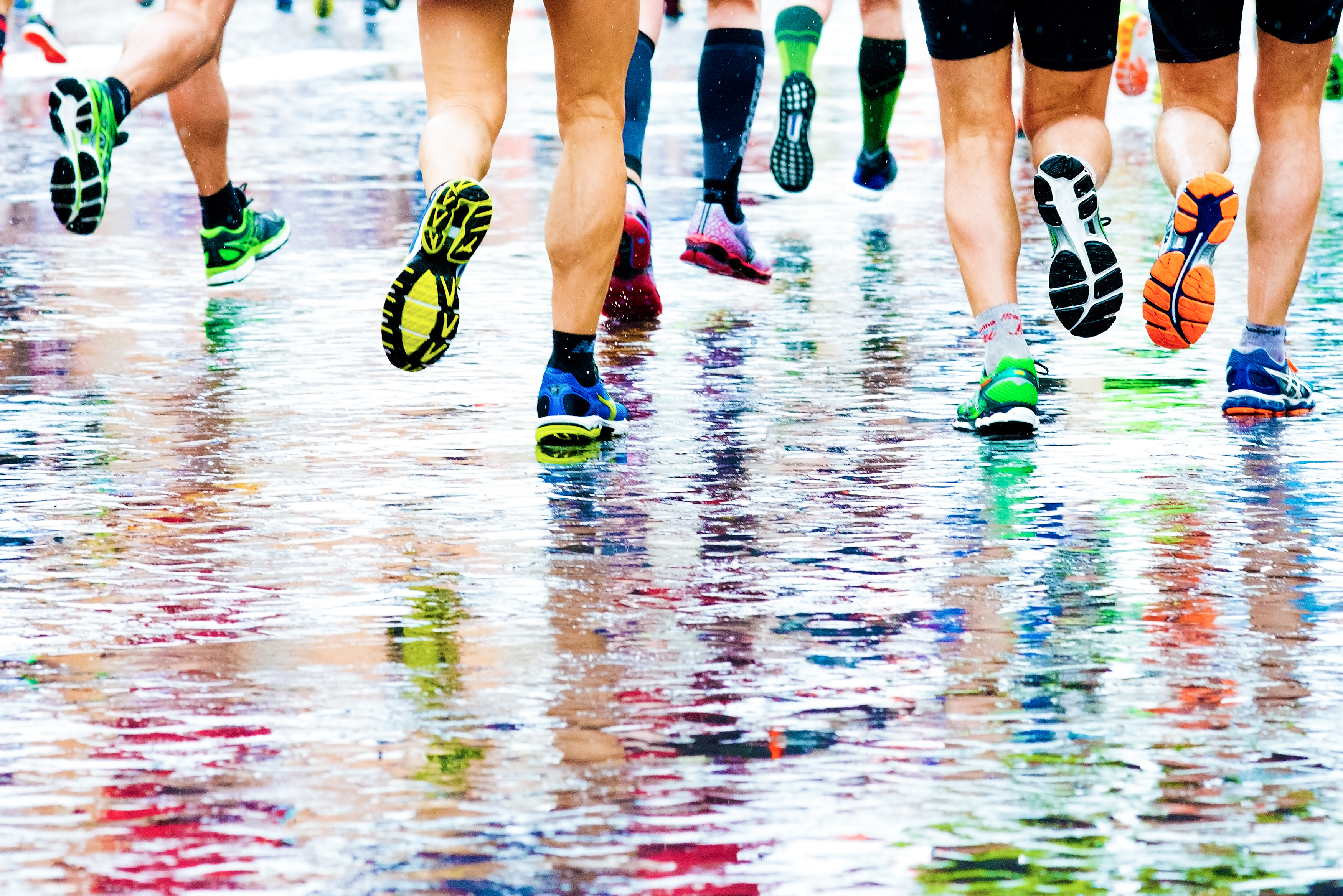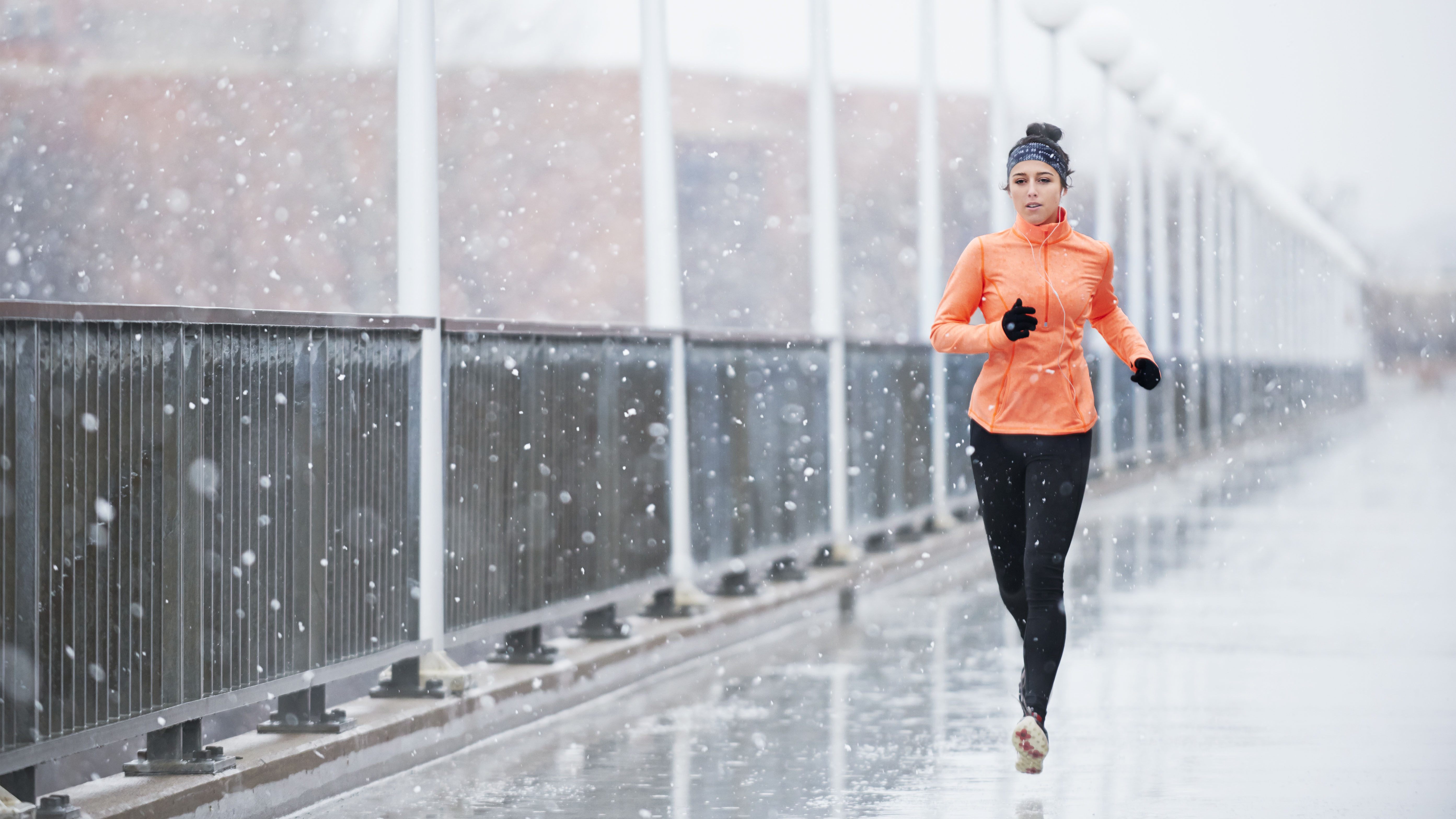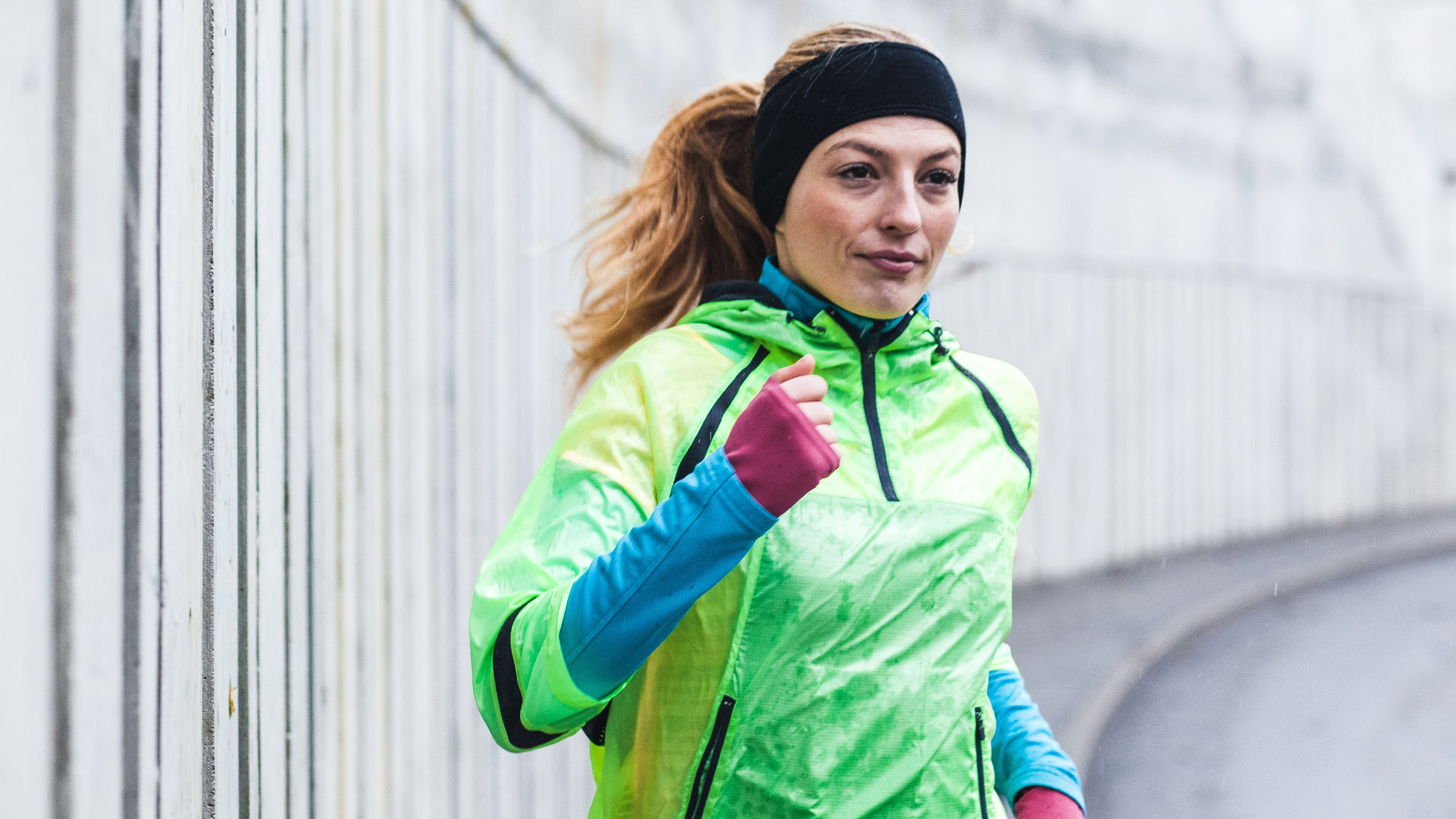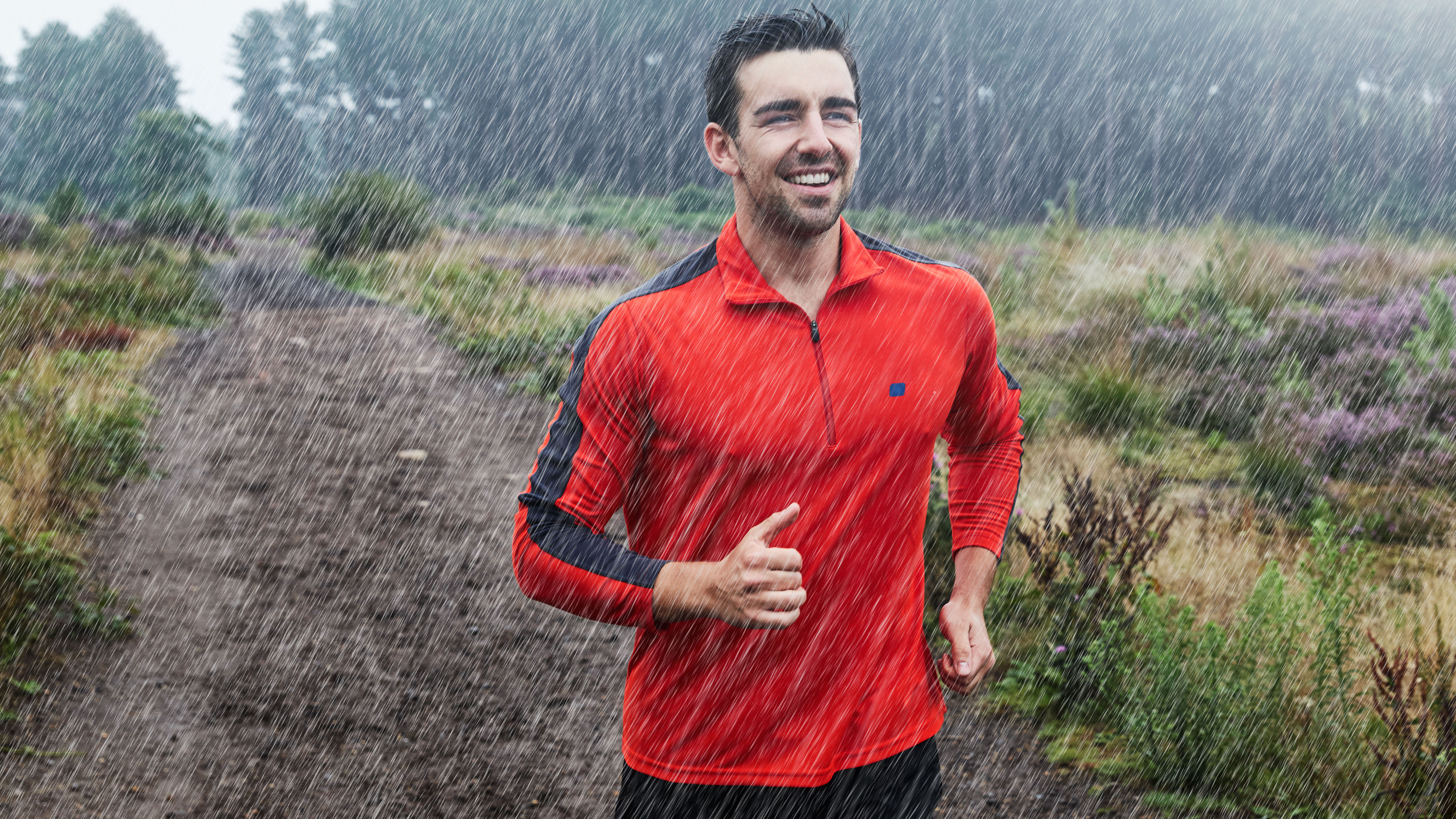Here's how running in the rain affects your performance
Everything you need to know about running in the rain as an experienced athlete or novice

Some people embrace running in the rain with open arms. Others prefer to play it safe by hopping on one of the best treadmills when it's wet outdoors. But could a sudden downpour put a damper on your run time? And is it actually safe to run in the rain?
It’s difficult to calculate exactly how environmental factors impact individuals, but research suggests that heavy rain could definitely slow your run speed. However, a damp jog isn’t likely to make you ill and it’s fairly safe, too. What’s more, there could even be some benefits to exercising in damp, cooler weather. We asked Hawley C. Almstedt, a professor of health and human sciences, to explain.

Hawley Almstedt is a Professor in the Department of Health and Human Sciences at Loyola Marymount University. Her research focuses on how diet and exercise influence development of peak bone mass and the prevention of osteoporosis. She earned her Ph.D. in Exercise Physiology back in 2005 and has since gone on to deliver several papers and speeches exploring the topic of bone health.
How a change in environment affects your run times
When it comes to training, there are a few factors that play into the building blocks of the perfect conditions: starting with what kind of athlete you are, what you’re training for, and the conditions you’ll be competing under (if you’re competing in anything).
Almstedt says: “Optimal performance occurs when athletes train and compete under similar conditions. Depending on the season and location of competition, this is not always possible, but is certainly preferable.”
In other words, you're more likely to get a personal best when you're running in a familiar environment. So if you regularly run in dry conditions and suddenly take yourself for a rainy jog, you might find that your times are a little slower.

Research also suggests that heavy rain is detrimental to speed in general. A study published in the Frontiers of Physiology journal, looking at past completion times for the Berlin marathon, found that higher levels of precipitation corresponded with slower run times. Other factors, such as unexpected hot temperatures and humidity, are likely to have adverse effects on run times too.
How does running in the rain impact the body?
This doesn’t change the question of whether or not rain is a good environment to acclimate to in the first place. In terms of its impact on the body, rain can have a significant cooling effect.
A carefully controlled study, published in the Journal of Sports Medicine and Physical Fitness, tasked a group of 12 men with running at a constant speed in a low temperature environment with and without a replica rain effect. The results showed that body heat loss intensified when the men were running with the rainy conditions. The study also found that energy expenditure was higher in the rainier conditions.

This means that a rainy run will burn more calories than a temperate jog – if you match your usual speed – which is good news if you’re trying to achieve a calorie deficit.
On the flip side of this, rainy conditions could make it harder to achieve a new personal best, because your body is using up energy trying to keep warm – so you're likely to feel fatigued. To shield yourself from the effects of the rain, Almstedt recommends warming up properly and layering up for the exercise.
Can running in the rain make you sick?
Cold alone (or rain) can’t cause illness, but weather conditions can weaken your body’s ability to fight off illness and infection, making you more susceptible to getting sick if you’re exposed to an illness. Research published in the Clinical Microbiology Review also shows that rhinoviruses might replicate best at temperatures below that of the average human body.
But a person’s level of activity can also play a positive role in the risk of infection. When asked specifically if running in the rain can make you sick, Almsteadt said, “Exercise in general has a J-shaped relationship with immune health and risk for infection. Someone who is sedentary is at increased risk for infection. In fact, one of the best ways to lower your risk of contracting COVID-19 is to exercise on a regular basis.

“However, vigorous and prolonged exercise like running a marathon briefly weakens the immune system for several hours and increases risk for infection. This is an opportune time to contract an upper-respiratory infection, especially if an athlete is traveling and exposed to crowds. This may be the origin of the long-held myth that running in the rain can make you sick.”
So, how can athletes prevent this? Almsdeadt shared, “Athletes can reduce the risk for infection by getting adequate sleep, eating well, managing stress, and avoiding exposure to pathogens.”
Is it physically safe to run in the rain?
You’ll be pleased to know that it’s generally considered safe to run in the rain as long as there aren’t severe thunderstorms, flash flood warnings, or below-freezing temperatures. Usually, working with the rules of common sense will get you pretty far (literally).
Again, as long as you’re wearing appropriate clothing – such as moisture-wicking fabrics, enough layers to keep you warm, and shoes with enough grip to give you steady traction – you should be just fine.
If you have a marathon approaching and you’re not sure of what the weather conditions will be, it could even be beneficial to try a rainy run – it helps to prepare you for wet conditions.
Whether you’re desperate to get out there and pound the pavement or you’re searching for the best training conditions for your exercise routine, you can rest assured that you can hit the track rain or shine.
Sign up for the Live Science daily newsletter now
Get the world’s most fascinating discoveries delivered straight to your inbox.
Jamie Kahn is a Brooklyn-based journalist, editor, and certified yoga instructor whose work has been featured in HuffPost, Epiphany Magazine, The Los Angeles Review, Far Out Magazine, Atwood Magazine, and Live Science. She serves as the contributing features editor for Epiphany Magazine.











